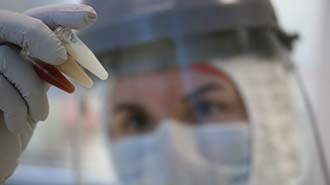Where do we come from? Where have we been? And who did we travel with? These are questions typically asked by anthropologists and historians. They must usually rely on remnants from human activity to seek answers to such questions. But similarly as forensic investigators now use DNA to demonstrate that a suspect has been at a crime scene, molecular geneticists can now trace DNA hundreds and thousands of years back in time.
This may sound as science fiction, as DNA molecules are long and unbelievably small and, at the same time, mechanically fragile and

chemically unstable. For this reason, ancient DNA in a sample make up only a few percent due to contamination from microbes and other organisms. Despite this, it is now possible to isolate DNA from ancient and prehistoric material and we can read genetic information in hereditary material from organisms that lived a long, long time ago.
New technology rises new questions and answers
The pioneer behind this technology is Svante Pääbo at the Max Planck Institute for Evolutionary Anthropology in Leipzig, most known for his work on the Neanderthal genome.
To isolate ancient DNA, a purpose-built laboratory (aDNA lab) is required, like the one built in 2015 at the Department of Biosciences in collaboration with the Natural and Cultural History Museums at UiO.
At IBV, Sanne Boessenkool and Bastiaan Star and their collaborators at the Natural History Museum use aDNA to follow the paths the Vikings took. The follow both plants and animals that followed the Vikings on their voyages and they could recently show that Vikings traded in dried cod from Lofoten in Hedeby in Germany nearly thousand years ago. To achieve this, Boessenkool and Star optimised the method for isolation of aDNA from fish bones.

The Black Plague and human migration
Barbara Bramanti uses aDNA in her ERC project where they are hunting for strains of Yersinia pestis that caused the Black Plague and other plagues.
In one of the new Convergence projects funded by UiO:Life Science, IBV's professor Nils Chr. Stenseth and professor Jan Bill at the Cultural History Museum, will use aDNA to explore migration patterns and processes that shaped the cultural and genetic landscape of East Eurasian populations.
Research on old and ancient DNA is an interdisciplinary affair where there is a constant need to find new strategies to find suitable samples were aDNA is well preserved and to develop new and better methods for sequencing DNA in old or prehistoric DNA samples. Most important of all is, though, to find the best and most interesting questions that aDNA technology can be used for.